*********************************************************************************************************************************************
DECEMBER 2021 UPDATE
*********************************************************************************************************************************************

PETE JOHNSON
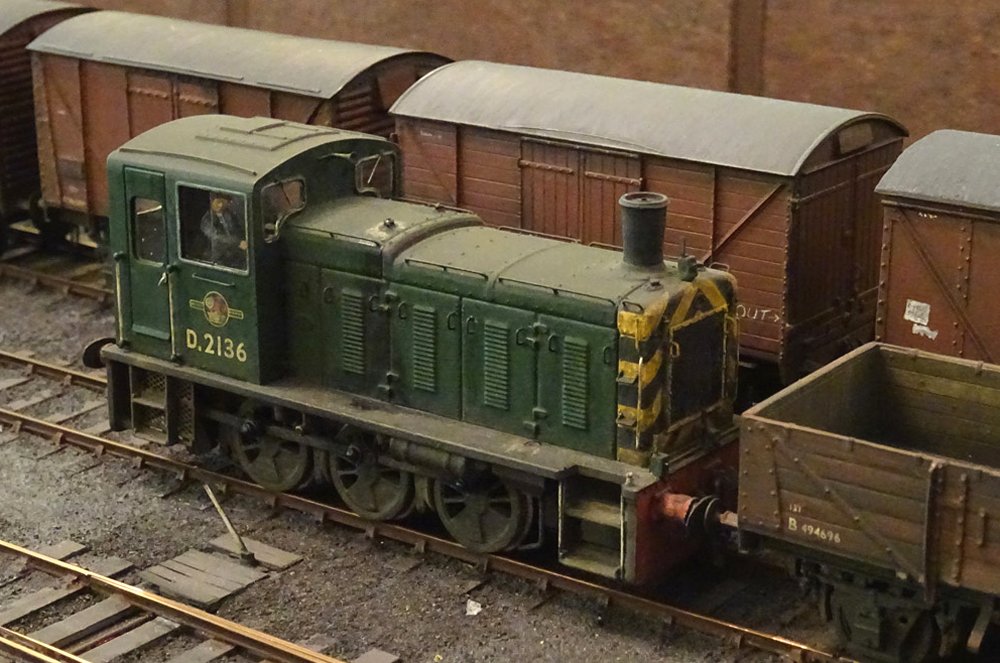
This month’s Canada Street pictures try to rekindle memories of locos around the Gloucester
area during 1967. Horton Road shed had a small allocation of the Swindon-built Class 03
which worked the ex-GWR lines into the western side of the docks. D2136 was destined to be
an early withdrawal from the BR fleet, and was scrapped during 1972 still in green livery.
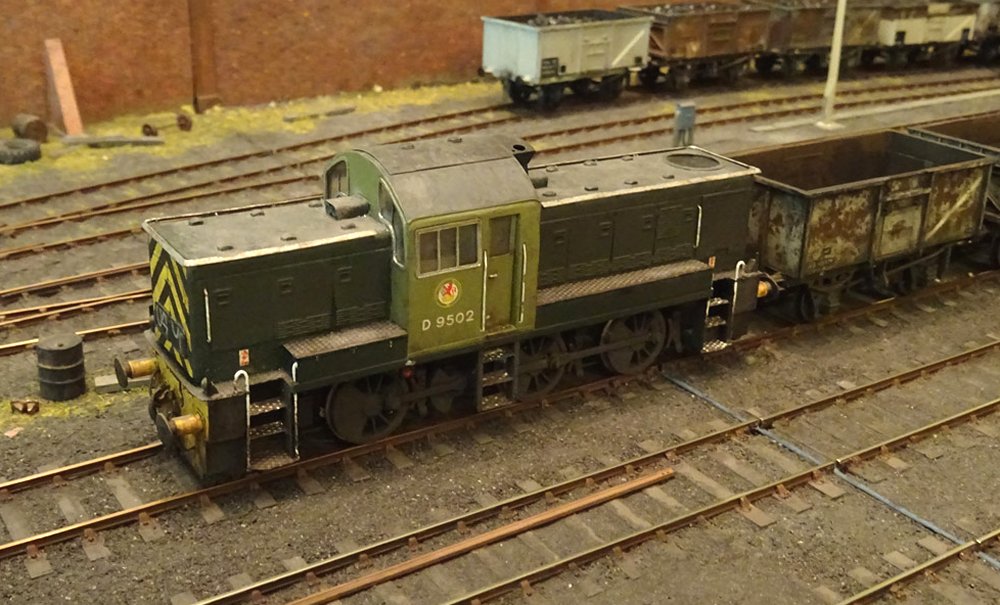
The depot appears never to have had any mainline loco allocations, but was a regular stabling
point for type 1 and 2 diesels for trip trains along the remaining Gloucestershire branch lines.
Class 14 D9502 was a typical example, but was sold to the NCB during 1969 as branch line closures
made the type surplus to requirements.

The North British Class 22s were a similar story, and tended to take over any remaining trips
once the Class 14s were gone. The BR purge of diesel hydraulic types was to catch up with them
just a few years later however. D6320 was amongst the final survivors, but had been scrapped by
the end of 1972.

On the workbench the five 35t BRT grain hoppers have made steady progress. This example, with
White Horse posters, is ready for paint.
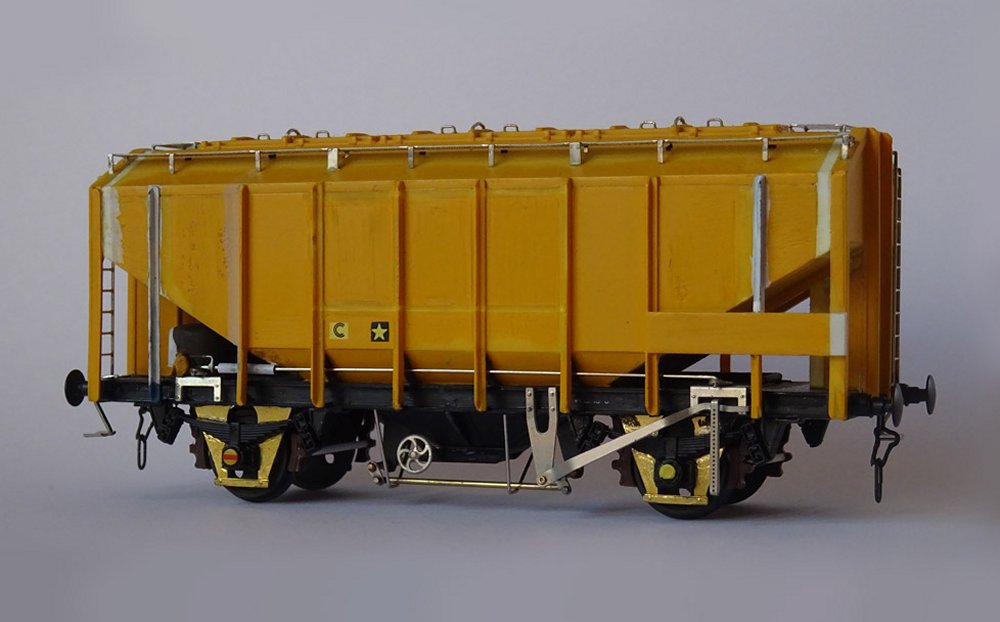
The ex-Maltsters Association example is pictured at a similar stage.
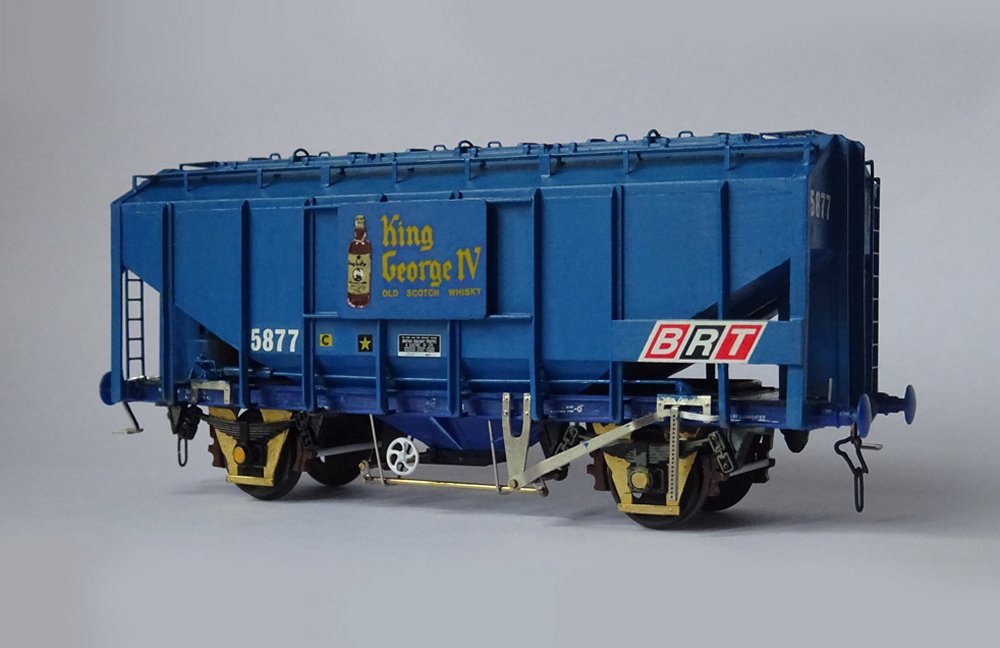
The additional wagons have allowed a new poster to be added to the fleet using old Trix boards.
King George IV branded 5877 is pictured ready for final weathering.

Also pictured ready for weathering is hybrid livery Class 31 5828, based on the Lima model but
with several Shawplan detailing enhancements fitted.

The four 12 ton vans have now been weathered using the usual matt enamel grime mix with some
rust colour highlights. B767293 was chosen to model because of the rusty steel repair plate
fixed on top of part of the number.

B761490 shows the fresh paint patches for the recently applied stencilled markings.

Plywood door B774125 carries framed markings typical of the mid-1970s.

The last of the group shows framed markings on a 1970s general re-paint.
*********************************************************************************************************************************************

KIER HARDY
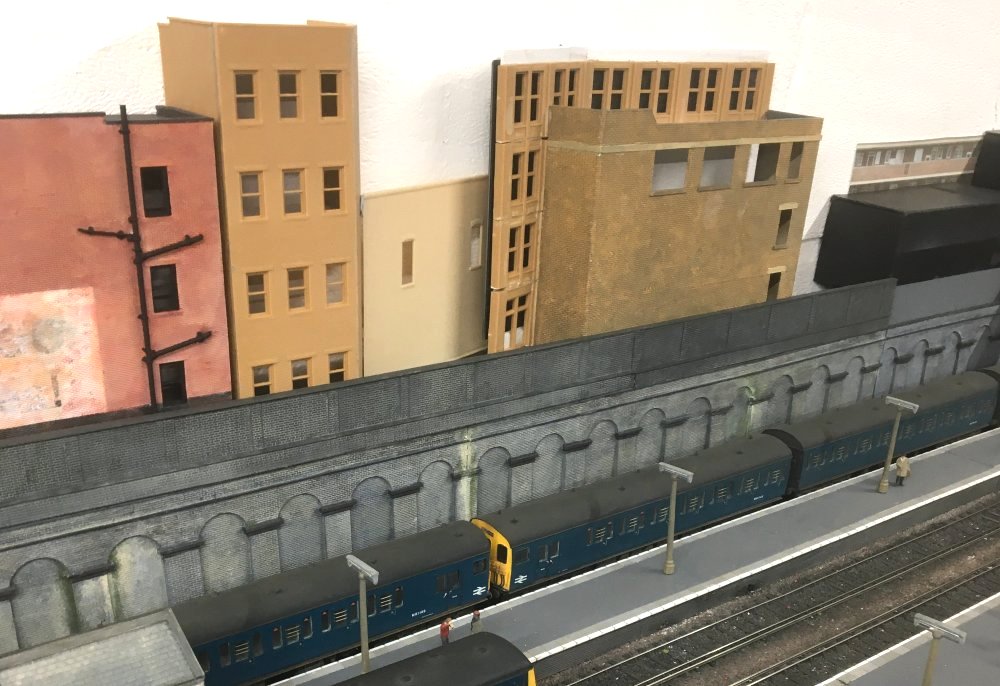
Work on the station extension section of the layout continues with the construction of the
buildings and retaining wall. This shows a mix of City Classics kits and scratchbuilt buildings
using South Eastern embossed plastic sheet. By using a variety of building styles, colours, heights
and angles, it breaks down the monotony of the background.
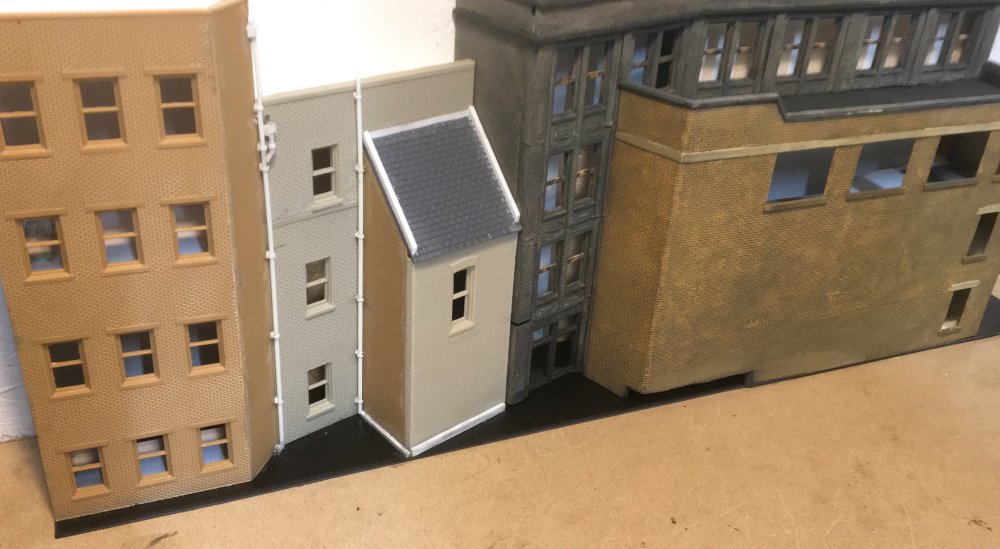
With the final arrangement sorted, a start has been made adding detail parts such as downpipes,
guttering and hoppers.

This shows the initial dark tones being added to the brickwork, followed by the painting of window
frames and pipework. For added variety, a dormer has been constructed on the sloping roof building.

There's still a way to go before this scene will be finished. More scratchbuilt
structures start to fill the gaps on the backscene, whilst the retaining wall has been completed
and weathered to match the existing brickwork.
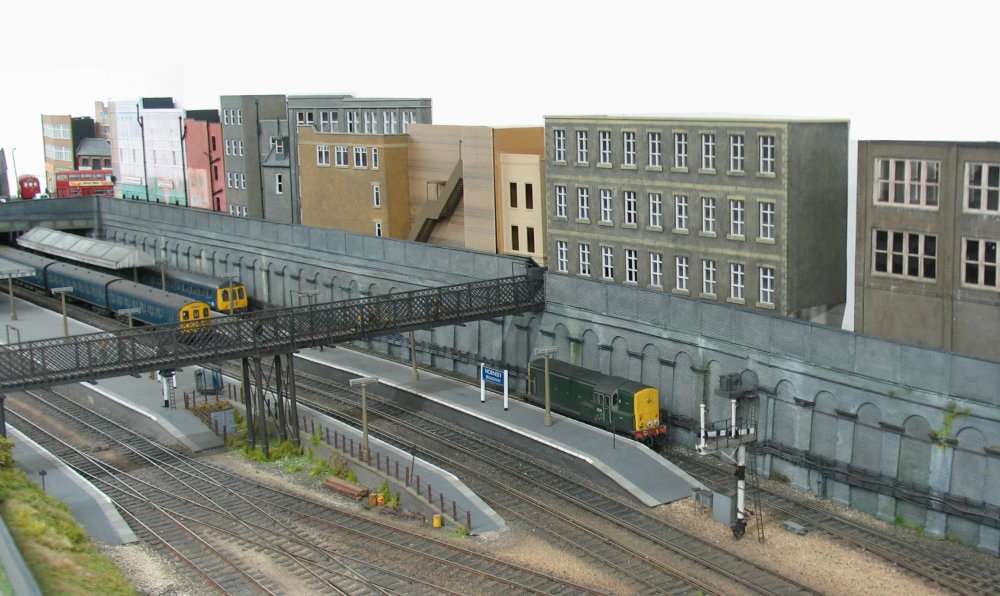
This side of the footbridge sees a
JS Models laser-cut low relief building, modified in height and
depth to suit the location. On the extreme right is a DPM kitbuilt building which was constucted
around 15 years ago for the layout, now starting to show its age and will be modified and
shortened to allow the development of another building.
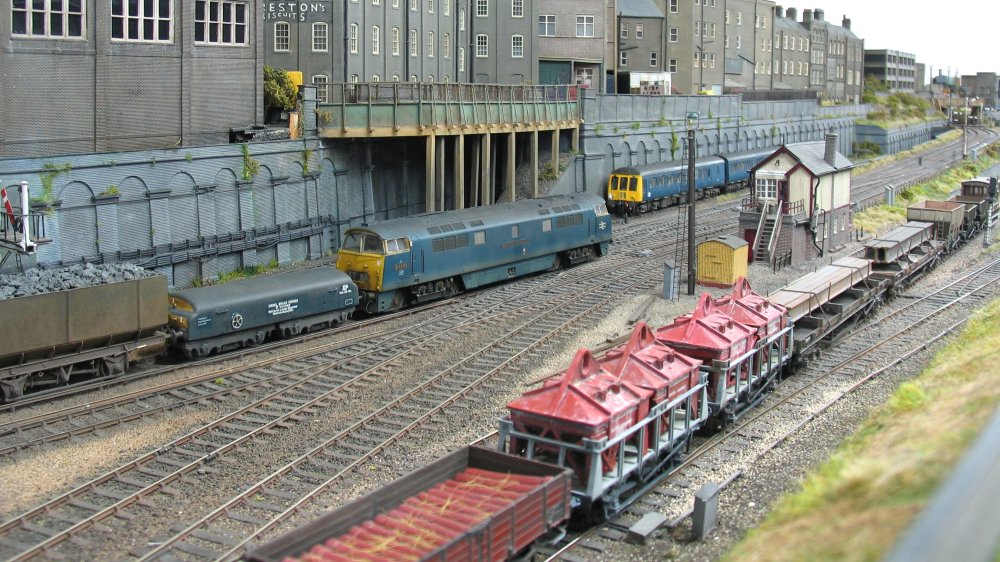
Visiting motive power in the form of D1068 Western Reliance heads a coke train along the Up East
London route, one of Greg's Shenston Road locomotives. This view also shows the retaining wall
prior to being finished, as well as the DPM building which is due for partial demolition. A mixed
freight heads north consisting of a Pipe wagon featuring Jonny's home made vacuum formed pipe load
as well as a couple of his Conflat LD wagons carrying dolomite containers.
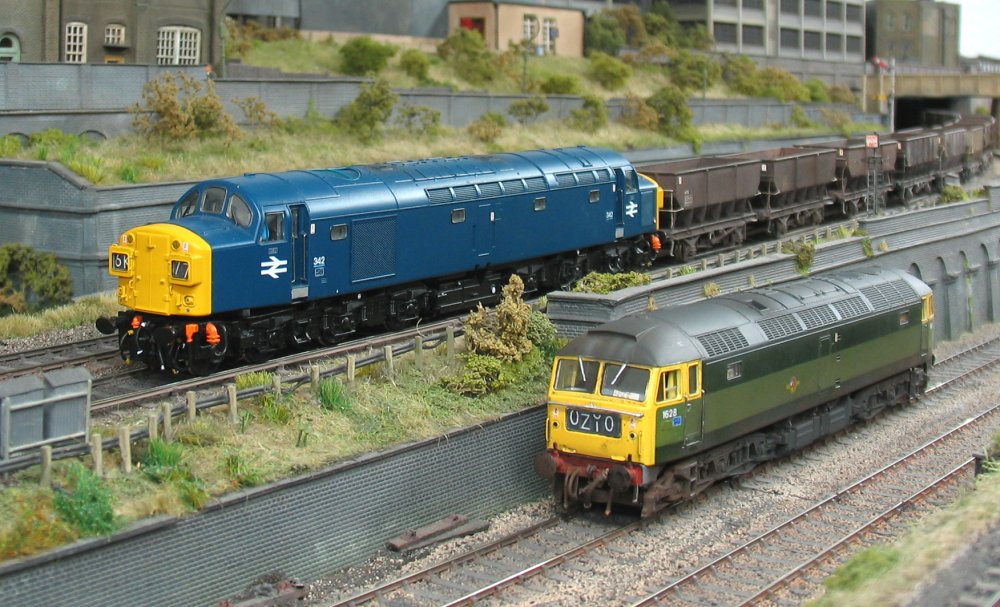
On another day, Greg's 342 fresh from Crewe works is in charge of a rake of empty 21 ton hopper
wagons. 1628 from the Eastwell fleet runs southbound light engine. This loco was featured on the
October 2021 website update and has just had the surrounds to the tail lamps painted yellow - for
some unknown reason, a lot of Heljan two-tone green Class 47s were released with incorrect black surrounds.
*********************************************************************************************************************************************

GREG BROOKES
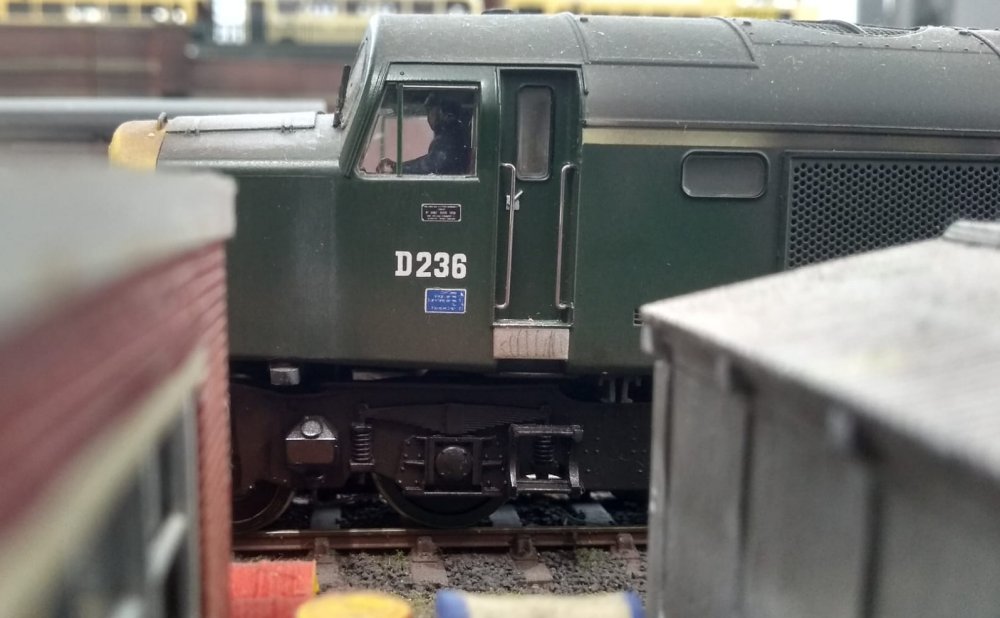
A glimpse over the wall at the stabling sidings sees English Electric type 4 number D236
resting between duties. With camera in hand, it was a good opportunity to take a few snaps.

5809 is captured on the stabling point headshunt, whilst 1665 Titan passes by with a mixed freight.

Meanwhile over at the steel works, YEC Janus 0-6-0 number 107 shunts ingot mould carrying wagons
in the upper level sidings.
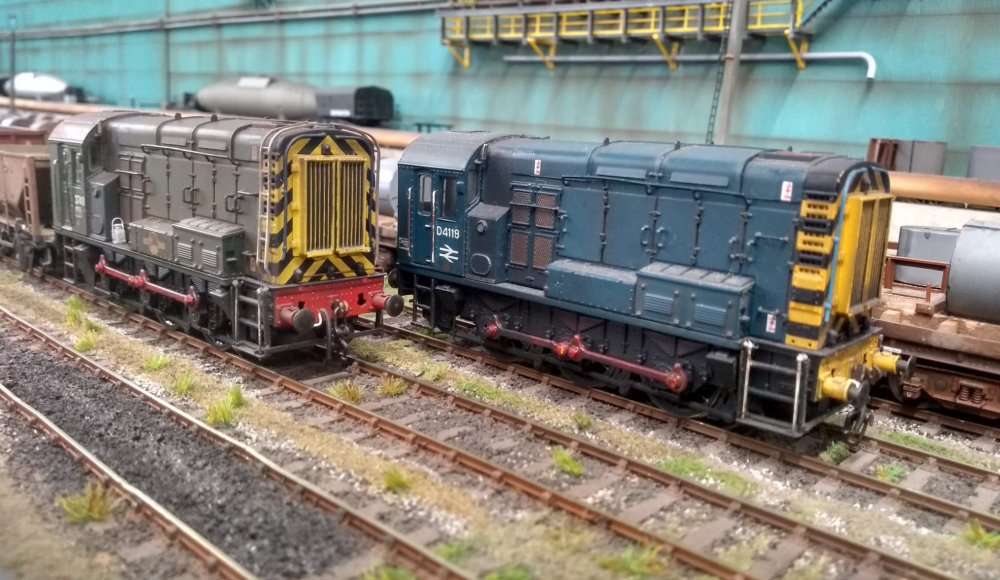
D3748 and D4118 captured at BSC Shenston exchange sidings, surrounded by strip coil
wagons ready for despatch.

D1028 Western Hussar on the Gulf tanks passing D7093 in the loop.
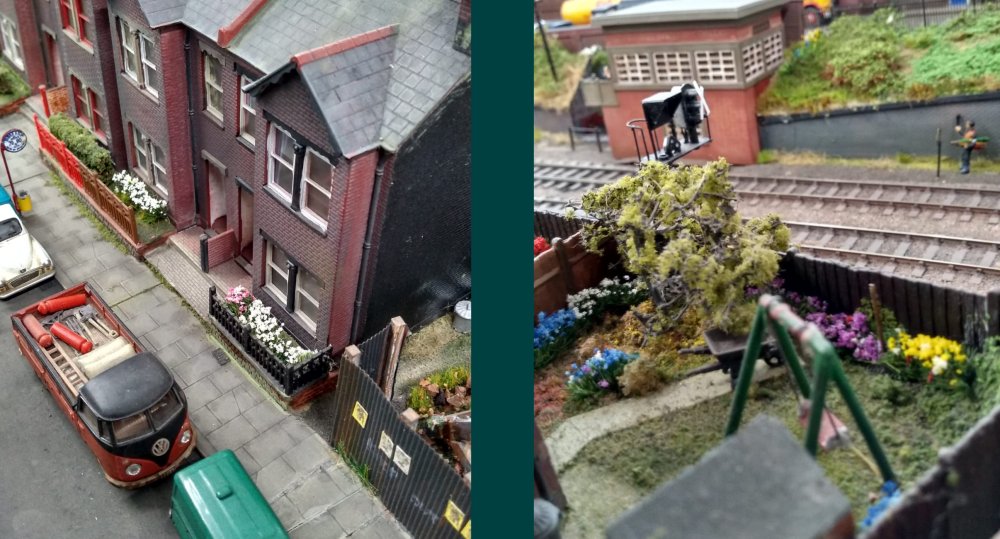
Continuing with the detail work on the layout, this row of houses on Station Road have been
enhanced with some
Rival Crafts unique gamer scenics, representing flowers for the front and rear gardens.
*********************************************************************************************************************************************

HYWEL THOMAS
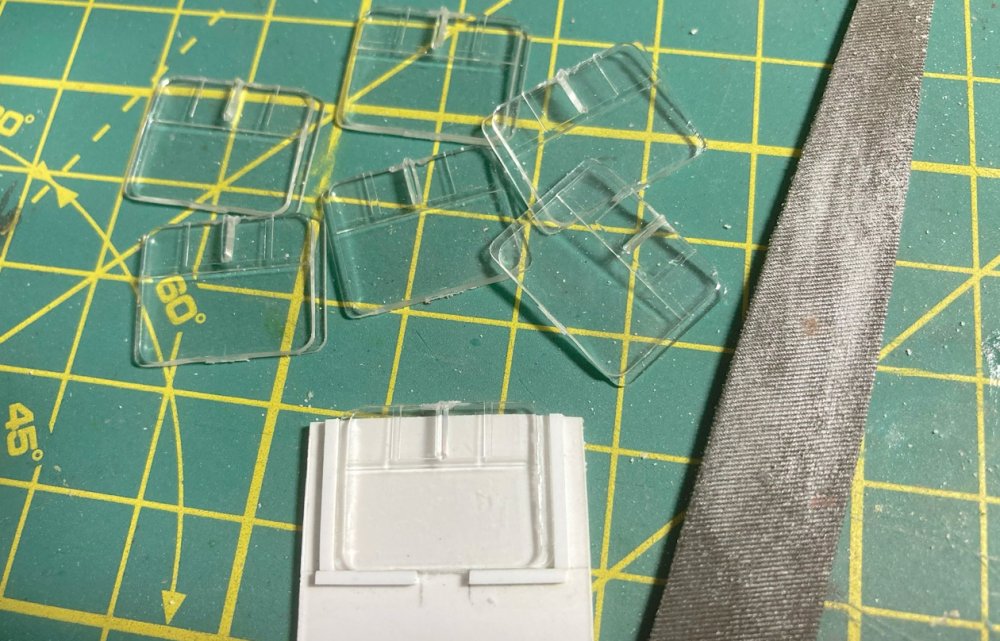
Last month a start was made on converting the Hornby Collett Restaurant GWR diagram H33
into the WR S&T inspection saloon, DW150266, based in Reading. Always intended to be a cheap
conversion utilising whatever I had to hand the windows were sourced from an old Kitmaster
Mk.1 kit. These were slightly too narrow (which I could live with) and too deep but a simple
plastic jig solved the height issues. Some work with a file and each was ready for its new role.

With the bodywork finished the next job was a simple representation of the interior. Whenever
I saw DW150266 it was parked up with the curtains drawn and as that was how it would be
portrayed on the layout very little of the interior would be visible. I kept the original
kitchen as the partitions were useful in preventing a view right through the coach in the few
windows that didn’t feature curtains. The chairs at each end utilised some of the original
seating modified to suit. The two blocks near the centre contain captive nuts to attach the
body to the chassis. Once complete it received a coat of brown paint.
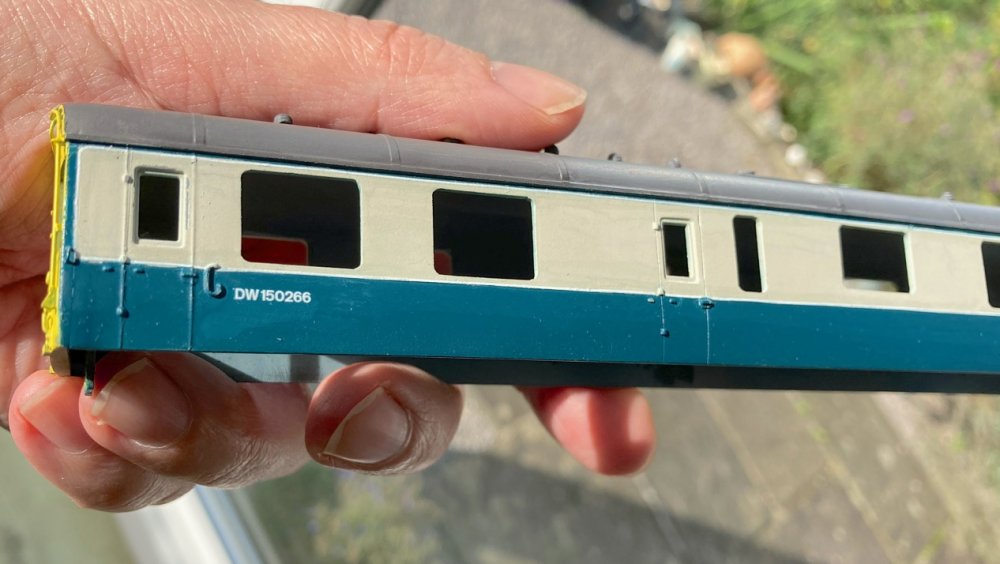
Meanwhile the primed body received its top coat of blue and grey. The original had retained
chocolate and cream into the late 1960s and carried blue and grey into the 1980s, eventually
returning to GWR colours for its final years of service. Lifecolour acrylic was used, sprayed
on using the airbrush. The simple transfers and lining (the latter taxing the patience of
someone who rarely strays from wagonry!) were Railtec. Here we see it before a unifying coat
of Testors Dulcote.

Last task was the underframe. As usual with such things finding decent photos was a challenge
but this seemed near enough. Most of it comprised simple plastic boxes with some ready to hand
ABS whitemetal brake bits and a dynamo turned from plastic in the power drill. The lower lip
of the underframe channel was a strip of 10-thou plastic added once most of the full length
step had been removed. Buffers, I think, were from Comet.
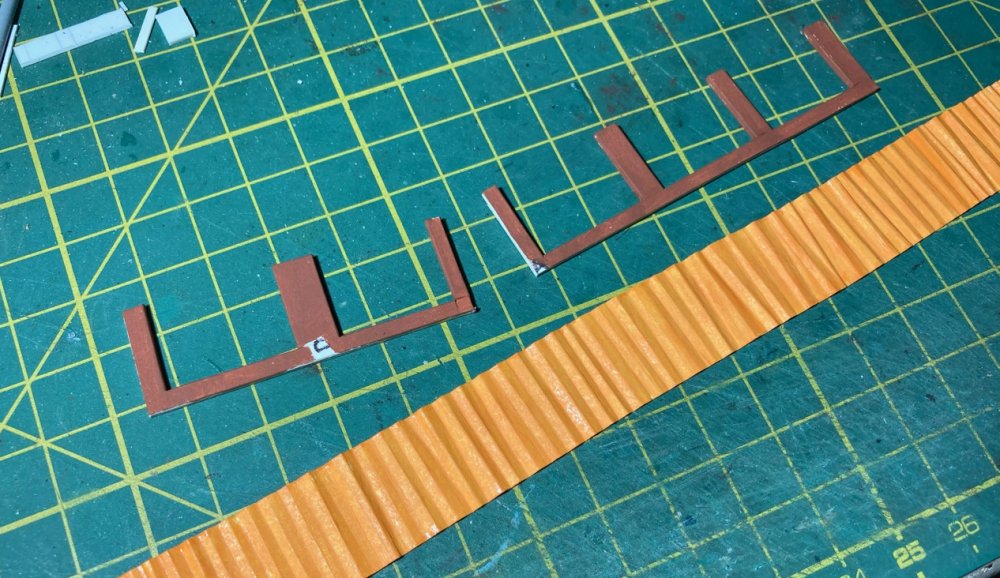
A slightly tedious task was recreating the typical BR 1970s orange curtains – a real feature
of that era of inspection saloons and various other departmental stock. The paper was painted
with a Tamiya orange and then creased on the edge of a steel rule. They were kept clear from
the windows using spacers cut from mounting board and painted to match the interior.

At last all the various sub-assemblies have come together. The Kitmaster windows were secured
with some glazing glue, the curtains added, the interior popped back in and the whole thing
secured with the original end clips and the two new bolts in the centre of the underframe. I
think the entire project cost me about £12.

Here we see the ‘two side windows’ end as it awaits the fitting of couplings. The Kitmaster windows
do not do a bad job of offering almost flush glazing. The end windows featured individual pull
down blinds, these being some greaseproof paper offcuts from the kitchen.

And this is the ‘three side windows’ end with its different array of fittings. I left the moulded
‘curly’ door handles as I didn’t think I could fold up four identical examples. Also visible
are the rear-view mirrors attached to the door frames.
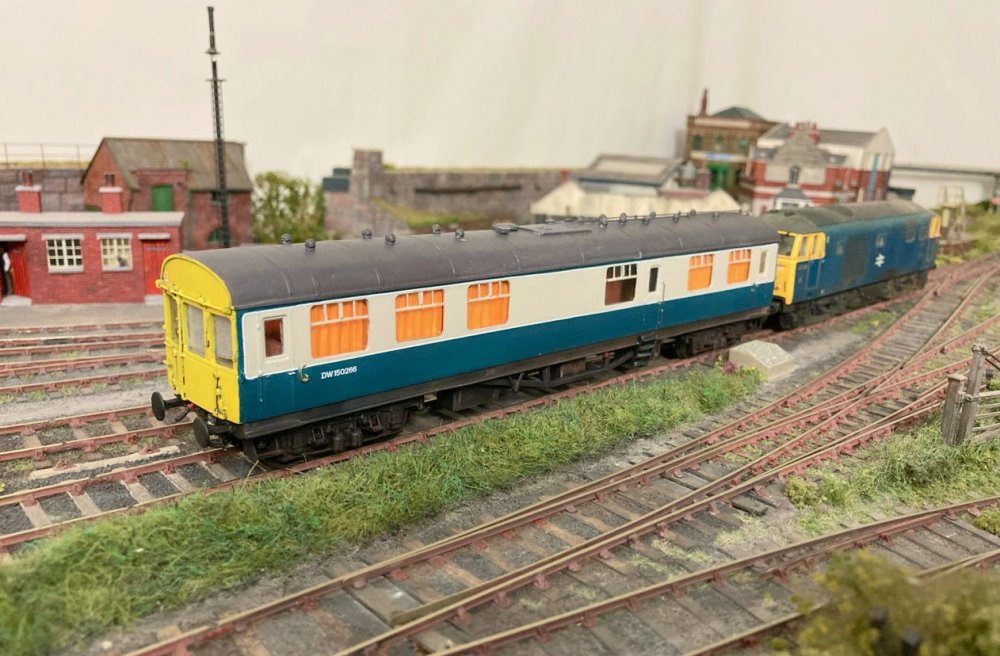
And finally the saloon makes its first visit to Morfa Bank, hauled in by a Hymek. It will be
shunted to the loading dock siding and locked up for the night, curtains drawn, while the staff
spend a night in a Port Talbot hotel.

By the next morning the saloon has headed off early into darkest West Wales as Ebbw Junction
regular 5180 works a special freight back to Margam Yard in between its booked duty back east.
Stabled behind is a sand tippler working from Margam to one of the WR diesel depots with local
sand for the dryers.









































